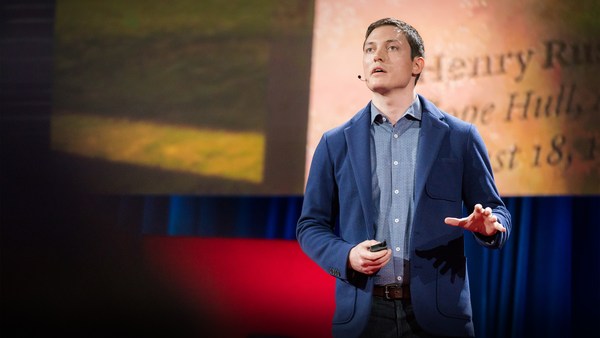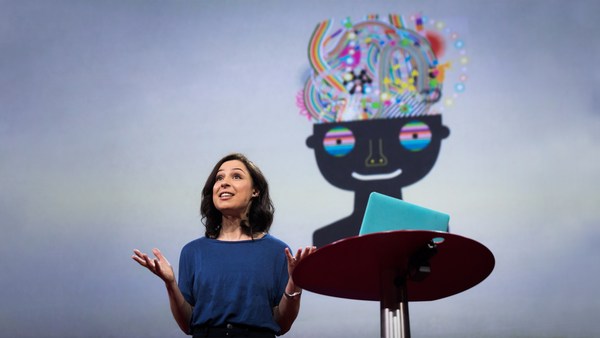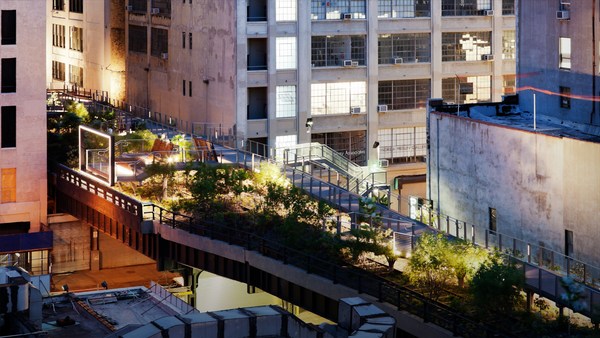It's the TED Radio Hour from NPR, I'm a new samadhi. And I want to go back to the early 90s, to Poughkeepsie, New York, you know, when I was growing up there every Saturday, basically my father would get up really early and tinker and work on the house that we lived in. This is Michael Murphy, and that house was an old Victorian. It was designed by this incredible architect named Horace Trumbo. You know, the kind with shingles and stained glass windows, a big wraparound porch. But it was kind of falling apart. Yes, sure. It was very drafty. There was rot and wood. The porch was falling down. There was stained glass that needed to be fixed. You know, this is my worst nightmare, by the way. You know, but Michael's dad loved it. And slowly restoring this house piece by piece became his ritual for years, nonstop every Saturday throughout the year. Just some project that would take, you know, years to figure out he would just kind of chip away at even after Michael left for college and moved abroad until 2004, I got a call from my mother that my father was very sick with cancer, that I had to come back in order to be with him on undefined death watch, we might say, hit about three weeks to live, they told us. And he was only 52 years old. Is that right? That's right. He was 52 years old. So pretty young and quite surprising for us. And I'm sure, you know, many of us have experienced something tragic like that or where the table cloth is pulled out from under you and some things remain and some things fall off. And, you know, so I dropped everything and moved home. That status, that paralysis. The condition of anxiety, of just keeping myself busy, really, to avoid thinking deeply about what this loss might actually mean. That's when I decided to think about the house and trying to finish what he had left before this event happened and he decided to help me. You know, strip old 100 year old wallpaper and try to figure out the stained glass and started repairing the floors of the attic space, three weeks turned to three months. Three months turn to six months. Summer came. We're working all the time. And he turned to me after we repaired the front porch and had finished 50 paned windows. And he was now in remission. And he said, you know, working on this house saved my life. Were you surprised when he said that or did you immediately know what he meant? I think that statement in the moment makes a lot of sense. Maybe it means something like this gave me hope. This gave me something to do every day. This gave me a North Star to point towards and working with you on it kept me alive, kept me focused on what's possible. But maybe it also meant something deeper, maybe the kind of spiritual connection that we have to the places that we live in. It is only made manifest in that daily toil and the daily maintenance and the daily restoration that the ritual and the practice of participating in creating the conditions for our family to live safely is a part of the human condition. Four walls and a roof provide shelter, but they can also comfort, inspire and sustain us, something we're all realizing these days. Spaces can give us meaning and purpose, and just as that house inspired Michael's dad to keep going, it also set Michael on a new path into architecture to build structures that had the power to heal. So I'm hoping that you're going to tell me that you go off to architecture school and they are like, welcome, we will make all those big ideas, you will be able to build them for people in the rest of the world. Is that what happened, Michael? Uh, you know, a version of that I want it was a unique moment. So this is 2005 and 2006. Great, fancy, beautiful, expressive cultural centers were being lauded and talked about. But I wouldn't say I was hearing a lot of or learning about this thing that really, I think struck my father this deeper spiritual connection to why we build or what the design of a home might mean to us in our daily lives. Is it fair to say that what you're talking about is this idea that architecture can inspire awe and wonder, but it wasn't being used to do something more sort of practical in that it wasn't being used to heal in a much more sort of humanitarian kind of way? Yeah, I think architecture does do both of those things. I think architecture does produce a sense of wonder, but it does more than that. It affects our daily lives. It affects our physical health. It seems it affects our ability to imagine a possibility of living a more productive and more hopeful life for our families. And those links are broken. It occurred to me, until I meet this amazing doctor. His name is Paul Farmer, and I think he bridged some of that gap for me. Michael Murphy continues his story on the TED stage. Just as I was about to start my final exams, I decided to take a break from an all nighter and go to a lecture by Dr. Paul Farmer, a leading health activist for the global poor. And I was surprised to hear a doctor talking about architecture. Buildings are making people sicker, he said. And for the poorest in the world, this is causing epidemic level problems. In this hospital in South Africa, patients that came in with, say, a broken leg to wait in this unventilated hallway walked out with a multidrug resistant strand of tuberculosis. Simple designs for infection control had not been thought about, and people had died because of it. Where are the architects? Paul said if hospitals are making people sicker, where are the architects and designers to help us build and design hospitals that allow us to heal? And there in that moment, I think the link emerged that we in the architectural and design professionals are providing and working on a crucial human right. About the ability to live in a life of dignity and a place that protects you. Drugs won't work, the full scope of your ability to live a fruitful life is restricted. Did the plan come together then that you would join him and help his mission through architecture ? Yeah. So that started a long journey to work with Dr. Farmer and his team in Rwanda. And the first thing that I did was I met their head engineer, an amazing guy named Bruce Noisey, and Bruce was leading all their building projects. Airborne diseases are mitigated by moving more air through the room. So I worked with Bruce and his team and came up with the design whose primary goal was to reduce transmission of infections, to create all the waiting areas in the exterior, or to think about airflow, basically to remove all hallways, to increase the height of the wards so that we got, you know, both sun and air movement as the WTO prescribes, but also had plenty of space for patients to walk around. And our precedents were TB sanatoriums designed in the 20s and 30s, medical facilities designed in the 19th century, like Florence Nightingale and Alver Alto and these incredible designers who were thinking about airflow before the advent of HVAC or mechanical ventilation, they were thinking about how a building is sited and oriented to capture and maintain and control as much as possible in order to make people healthier. And we're thinking about this all the time. I'm sure now you're thinking about with the coronavirus, the tables that you're touching and the spaces and, you know, handles here. And all of that is related to some degree, being spatially aware of what is invisible around us. OK, so you you wrapped up that project in Rwanda back in 2011. And since then, you have gone on to build more hospitals and schools, affordable housing, senior homes. And what's amazing to me is that you have been thinking about architecture and airflow for over a decade. And I mean, the rest of us literally just started thinking about this in the last few months. Yeah, I think we're you know, we're undergoing a real existential moment in our relationship to the built environment around us, sort of recognizing that suddenly the built space around us could really threaten us. And while hospitals are designed, or at least we hope they are designed to think about mitigation of disease, the apartment building that you live in is not designed that way. The restaurant that you go to is not designed to manage disease transfer. And so we are suddenly in this moment where we have to think about all buildings as threatening our health and all built spaces as potentially improving or protecting us a little bit more seriously. Do you think even when the pandemic is over, that we are going to be forever changed in some ways with our relationship to our homes and to endorse spaces? I think so. I hope so. I mean, Six Feet is really a proxy for us to get more air flow. And with that understanding, we start to see at least I have started to see buildings really as breathing machines, as lungs themselves. If we acknowledge and accept the fact that, you know, buildings are basically allowing us to breathe freely, then it really becomes a question of rights that we have the basic human right to breathe. And we then can demand it in our policies and our codes and demand that housing is better, that with that demand, how could we allow prisons to exist the way they do? Institutional buildings have to be radically rethought under this rubric of the right to clean air, the right to breathe freely. And I think that's a, well, challenging and certainly going to be difficult to redesign spaces. I think the public will be demanding more accountability from the world around us, which I think is a really good thing. That's Michael Murphy. He's the founding principle and executive director of Mars Design Group, which designs hospitals, schools and memorials around the world, including the National Memorial for Peace and Justice in Alabama. You can see his full talk at TED that come on the show today, The Power of Spaces Ioannou SHAHMORADI. And you're listening to the TED Radio Hour from NPR.


